Plants need light, moisture and nutrients to grow properly. Creating healthy soil with all the required nutrients is the key to producing a healthy harvest. If you feel that your plants and crops are not growing well, you might want to look into fertilizing them. Usually, people use manure, compost or fertilizers to add the necessary nutrients to the soil. However, fertilizers are scientifically proven to be the best and most efficient among the three. Striking the right balance of nutrients is the trickiest part. Every season and every plant has different fertilization requirements. If you want to learn the basics of adding fertilizer to soil and want to understand the proper way to strike that balance keep on reading. Because in this article we’ll talk about whole detail about how to fertilize vegetable garden after planting. In addition to understanding how to fertilize your vegetable garden after planting, it’s also beneficial to explore sustainable practices like composting. One effective way to enrich your garden is learning how to make compost from kitchen waste, which not only recycles unused food but also enhances soil health. By incorporating compost into your fertilization routine, you can improve moisture retention and provide a slow-release nutrient source that will support your plants throughout their growth cycle.
How to Fertilize Vegetable Garden After Planting
Fertilizing basics for vegetable garden
1. The requirement of fertilizer varies from plant to plant
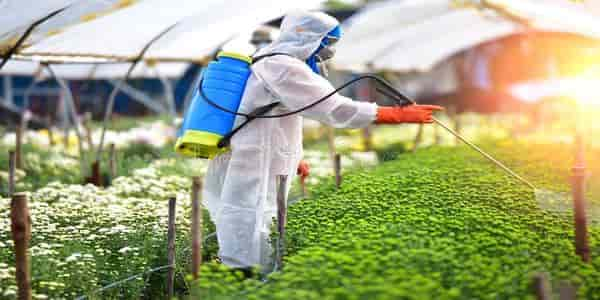
As mentioned, plants grow using combined energy from the sun, soil and soil moisture. The soil holds nutrients until they are used up. Usually, natural, well-drained and regularly quality fertilized soil has a huge bank of nutrients Which is sufficient for growing diffrent plants. However, newly cultivated soil lacks organic matter and nutrients. Before jumping to buying fertilizers and adding fertilizers to the soil, it is important to know the vegetable plant requirements. Some plants required large nutrient consumption and they rid the soil of most of its nutrients. Hence, in cases like these fertilizing the soil become a necessity.
2. Important Things about fertilizing
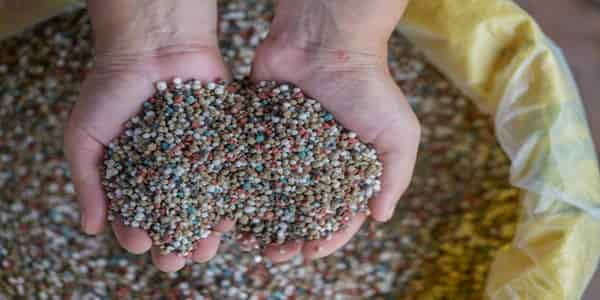
The best time to fertilize your soil is in the early stages of the vegetable plant development. This is when they suck most of the nutrients out. One of the most important things to remember while adding fertilizer is that too much fertilizer will turn into being hazardous for plants. Even if they tolerate the large amounts of fertilizer, they will grow too big and will bear very little fruit. Thus, before adding fertilizer to the soil, make sure you read the label and add fertilizer as instructed. Every chemical-based fertilizer has a certain potency and needs to be used accordingly.
3. Be Careful about Pollution
Apart from this, keeping your fertilizers from not causing pollution of the nearby areas and soil is extremely important. Make sure you follow the UF/IFAS guidelines when it comes to disposing of fertilizers. If you are expecting heavy rain, don’t fertilize your plants. Moreover, know your water source. If you are getting irrigation water, there is a huge chance it will be mixed with some fertilizers. Thus, add fertilizers to the soil accordingly.
Different ways to apply fertilizer in the vegetable garden
Applying fertilizers to soil and plants greatly depends on the type of fertilizer you are using and on the type of crop you are using it for. Granular fertilizers and liquid fertilizers, both have a separate way of application.
Granular Fertilizers Applying Technique

These can be applied by spreading the grains on the soil with your hand or with a spreader to target the plants. It is important that you spread the fertilizer evenly on the top four to six inches of the soil. Instead of using your hand, using a hoe or spade fork will be more convenient. You can also poke small holes four to six inches deep in the soil and add fertilizers in those. Once the dry fertilizer is added make sure to lightly water the soil. This helps in even spreading of the nutrients. However, if you are applying fertilizer in the growing season of the plant and not in the initial stage, only add the fertilizer to the top 1-inch layer.
Liquid Fertilizers Applying Technique
Liquid fertilizers are usually fast-acting. Its normally apply twice a week for the vegetable garden. The majority of liquid fertilizers are commonly mixed with water-based on the instructted ratio mentioned on the label. Make sure you don’t directly pour the concentrated fertilizer on top of the plants. It will end up ruining them. The diluted fertilizer is usually sprayed all over the plant soil. It then slowly and gradually seeps into the soils. Another way of applying liquid fertilizers is called ‘Foliar feeding’. This is done in order to give plants quick access to critical nutrients. For foliar feeding, all you have to do is dilute the fertilizer based on the instructions and spray it directly on the plant leaves.
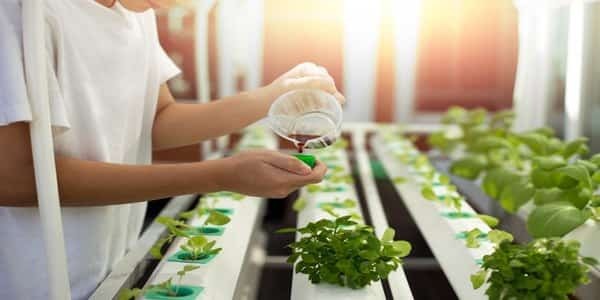
The method for applying liquid fertilizers is the same for early stages and for growing seasons. Make sure you don’t use the spray bottle you have previously used for spraying herbicide. The residue can be dangerous for your crops.
When to fertilize a vegetable garden
The timeframe of applying fertilizers to your crops and plants greatly depends on the type of plants. For example, if we talk about vegetable plants, they are in dire need of nutrients during their growing season. Once the plant become full adult then it’s hardly require any nutrients. Apart from this, there are two types of vegetable plants mainly: light feeders and heavy feeders. The latter requires more regular applications of fertilizers as compared to the former. However, both of them need nutrients during the early and growth stages.
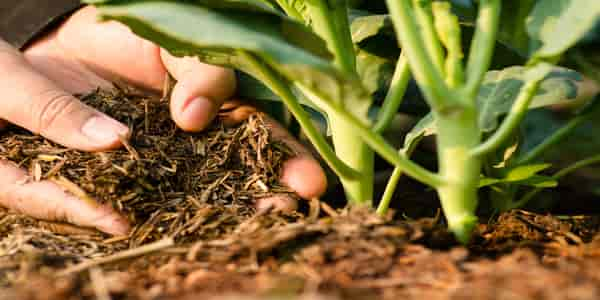
After the type of plants, the type of fertilizer also affects the time frame of the application. If you are fond of granular fertilizers, it is important that you apply them at least a few days before a good rain. This way it will have time to combine with the soil and later on with rain, it will seep in. As for liquid sprays, the foliar application should be done on a dry day. Rain and moisture will reduce the effect of the fertilizer.
Types of fertilizer for vegetable garden
Two main types of fertilizers are commonly sold in the market for the vegetable garden.
- Quick-release fertilizers
- Slow-release fertilizers
The type of fertilizer used greatly depends on the preference of the gardener. Both the fertilizers have the same end result, it is the process of providing nutrients and application of the fertilizer that differs. Quick-release fertilizers, as the name suggests, immediately make the nutrients available for plants. They are pretty efficient when it comes to giving a sudden boost to the plants. However, these are known to cause burn-like damage to plants. Moreover, if excessively used, they can affect the health of the plant adversely.
Slow released fertilizers on the other hand slowly and gradually provide nutrients to plants over the span of few weeks. They are more expensive than the quick release fertilizers. However, they cannot provide quick relief to struggling and starving plants. They are known to improve the overall health of your plant by helping it grow in a proper manner.
Quick-release fertilizer for vegetables
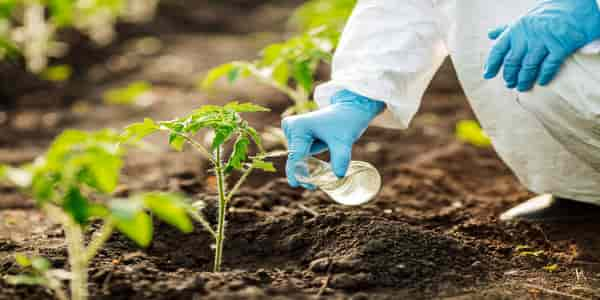
Quick-release fertilizers are easy to use, inexpensive and efficient when it comes to providing plants with a boost of nutrients. As mentioned, they are ideal to save starving plants. Most quick release fertilizers are made in liquid form. Hence, they can provide proper amounts of nutrients by both, soil and foliar, applications. Most of the expert gardeners think quick release fertilizers should be used during the early stages of plant development. However, make sure you use the fertilizer as instructed. Since these fertilizers are known to turn plants into a burn-like color.
Slow-release fertilizer for vegetable garden
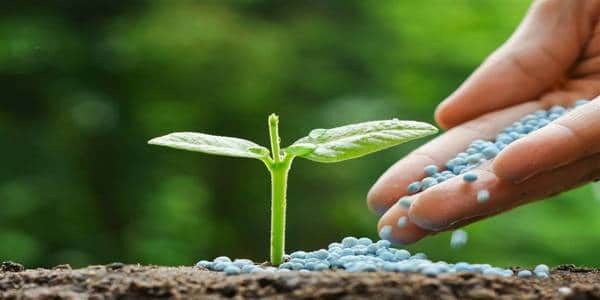
These are relatively expensive but give your plants the necessary amount of nutrients for weeks, which means a lot of effort is not required. The fertilizer is added to soil and if left there to slowly release the nutrients. Most of the slow-release fertilizers are in granular form. They are added to the soil during the planting time. Since they provide nutrients at a steady rate, they ensure the proper growth of the plant and improves their overall immune system. If slow-release fertilizers are compared with quick-release fertilizers, they are safer and a better choice. They contain smaller amounts of chemical and are closer to organic fertilizers.
Conclusion
Fertilizers play an important role in the growth of plants. Especially for agricultural lands where the soil is cultivated year-round. Vegetables are generally very hungry and require large amounts of fertilizers. Most of the common vegetables we grow are either heavy eaters or moderate eaters. Very few of them like bush beans, peas, mustard, turnips, etc. are light eaters.
It is important that you conduct proper research before buying fertilizer for your vegetable garden. Like any other product, there are many types of fertilizers available in the market. This is manufactured by different companies throughout the world. If you want to go for a fertilizer that is close to organic fertilizers and does not use a lot of chemicals, then go for granular fertilizers. Liquid fertilizers usually have a lot of chemicals and tend to burn plants if used excessively.
This article was all about helping you understand how fertilizers work and how to fertilize vegetable garden after planting. If you are new to gardening, you will fail many times before you succeed. Hit and trial is one of the best ways to find the best fertilizer for your garden. Make sure you wear some quality gloves while handling the fertilizer chemicals and keep them far from the reach of babies. However, if you cultivate your vegetable inside any greenhouse then its need not forget that maintaining the humidity is as important as fertilizer. So check out this article, which will help you people to get idea about how to control humidity inside a greenhouse.

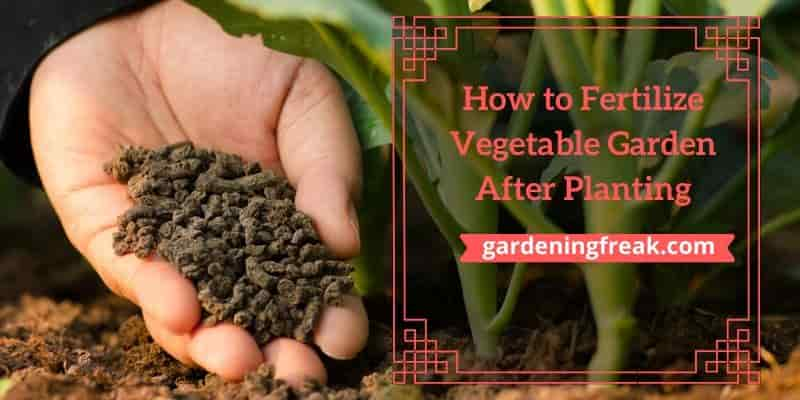
[…] field well if you are planning to cultivate seasonal vegetables. Because vegetable plants not only need proper fertilizing but also need a very well made tilling soil to get proper […]
[…] It doesn’t work that well for fertilizing potted plants but is work very well for fertilizing vegetable garden […]
[…] So if you want to fertilize your leeks after planting you can also check our article about how to fertilize vegetable garden after planting. So that’s all from this article. Hope this article will help you to get the basic knowledge […]
[…] Besides growing mushroom, if you want to grow vegetables on your home backyard you can also check our article about how to fertilize a vegetable garden. […]